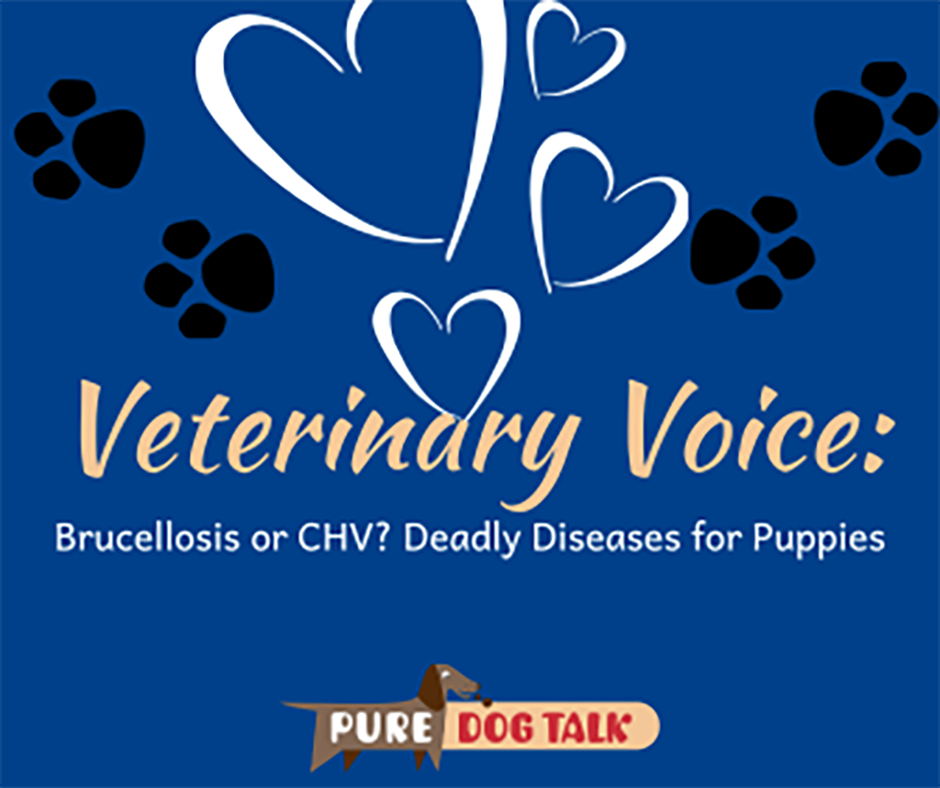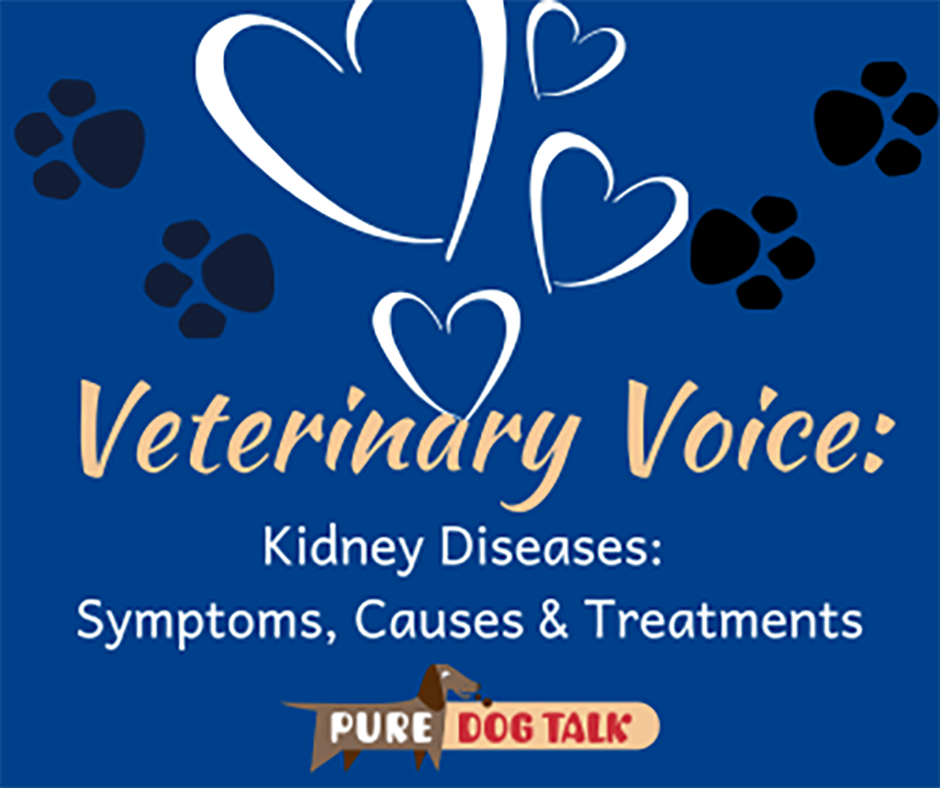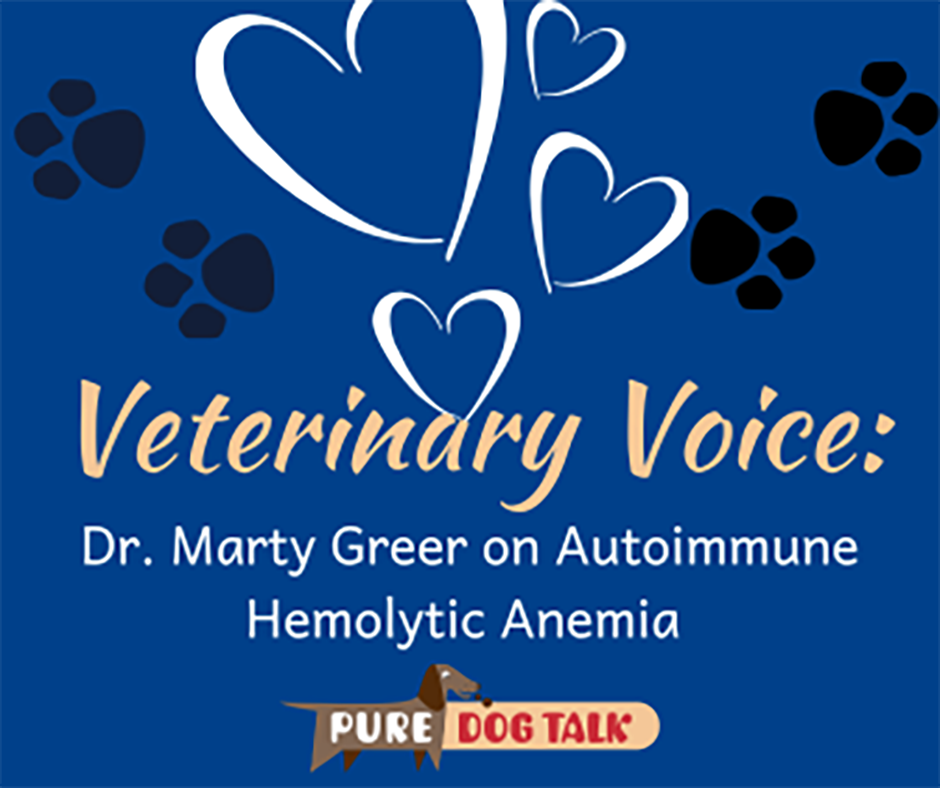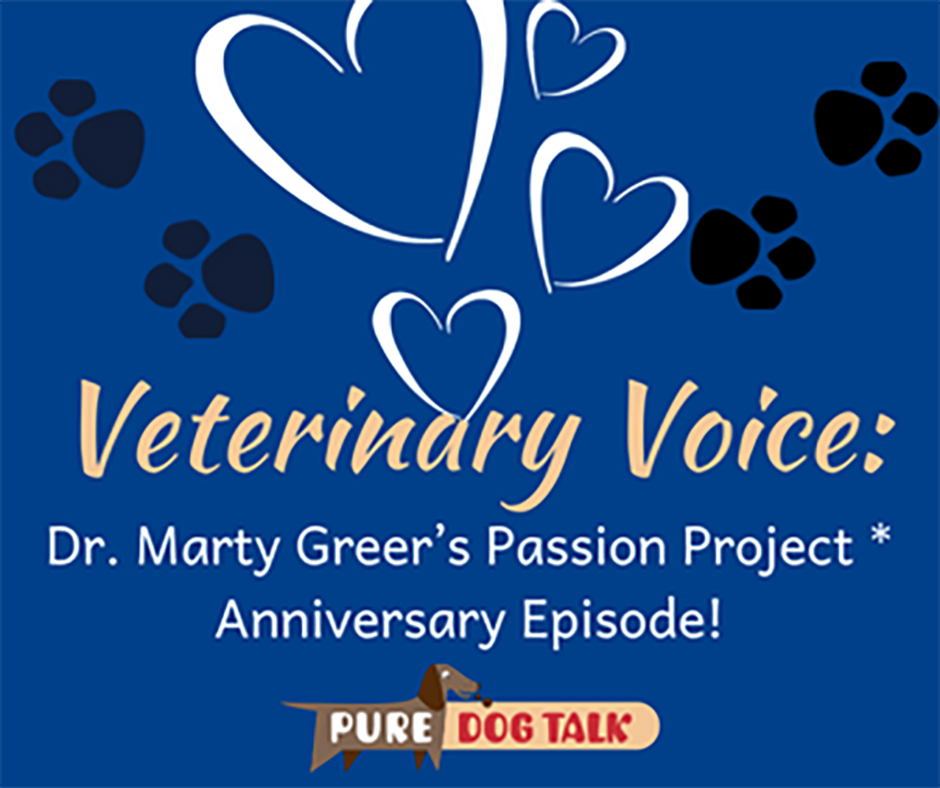715 – Whelping Box Foundations with Dr. Marty Greer
Whelping Box Foundations with Dr. Marty Greer
Host Laura Reeves is joined by Dr. Marty Greer to discuss whelping box foundational elements. From heat sources to bedding to disinfecting, this is “must have” information for all breeders.
“All whelping boxes will have a heat source and a surface that’s easy to keep clean and disinfected,” Greer said. “We’ve used the whelping nest as a heat source. There’s other companies now that make them and if you don’t have electricity they make them propane powered. They make them powered on DC batteries so you can get alternative sources and it might not be a bad idea to have that as an alternative source if you normally have electricity but you’re in an area that may have frequent outages and you’re expecting puppies.”
The heat source should NOT be a heat lamp due not only to fire danger but to the inherent dryness of the environment they create, which can reduce necessary hydration for the puppies.
“You want to make sure that you’re disinfecting,” Greer said, “and you’re using the right disinfectant with the right dilution or concentration. If it’s required to be rinsed that you rinse. So read the label directions and don’t mix Clorox with anything else. Don’t mix your stuff.
“So first you’re going to have this surface that’s heated and you’re going to have a disinfectant surface and then you need something absorbent. Because even when the female is cleaning up after the puppies, puppies still will have urine, they’ll have stool. And so you need something absorbent, especially in the first 3 or 4 weeks.
“If I cannot tell you anything else, please, no newspaper, no shredded paper. Traction. There’s nice fleeces that you can put in the box, those work well. I like the absorbency of the repeat pads, and they’re a lot easier to launder than the big fleeces. The fleeces, you have to go to the laundromat if they’re really huge, because they won’t fit in your typical washer and dryer. And then what I put on top of those is I’ll put an absorbent material down, like the Repeat pads that Revival has. And then I put down bath mats.”
694 – What’s Your “Line in the Sand” for Breeding
What’s Your “Line in the Sand” for Breeding
Host Laura Reeves is joined by Dr. Marty Greer for an important conversation about “what is YOUR line in the sand” when breeding dogs.
This is a conversation around breeding ethics and having a “mission statement” for your breeding program.
“I had a listener ask about a baby puppy with one testicle yoyoing and one maybe, maybe not there and what should they do? And Marty said, ‘Well, there’s only a couple things and it won’t take very long (to talk about), but I think that there’s no reason not to breed that.’ And I’m like, wait, what? So, Marty, I want you to talk to me about why, because this was a very interesting perspective that had literally never crossed my mind.”
The conversation continues from there with Marty describing her “line in the sand” as deadly diseases. Her reasoning being the additional genetic diversity that comes when we don’t “throw out the baby with the bath water” for issues which do not actively impact a dog’s quality of life.
“The world according to Marty Greer is for me a level 1 is something that you don’t have a life shortening, life altering disease from. It’s a retained testicle. For me it’s extra eyelashes. For me it’s an entropian. For me, it’s an umbilical hernia.
“For me, level 2 is something that requires chronic management, long term allergies. Thyroid disease, things that always need to be on medication. There’s an ongoing expense. There’s an ongoing thing that has to happen, but it’s not serious.
“And for me, Level 3, are life threatening, life altering, life shortening diseases. This is my definition. For me, that’s bad temperament. If your dog bites somebody, I don’t think that dog should be in your gene pool. If I have to muzzle your dog to breed it, I don’t think it should be in the gene pool. That for me is orthopedic diseases that are crippling. Hip dysplasia, elbow dysplasia, patellar luxation, all this stuff that happens orthopedically. And for me that’s things like seizures, because I think seizures are life threatening.
“But that’s my world. I live in a veterinary clinic. Remember, that’s what I do every day. So I see dogs that come in with owners that are distressed, dogs that are dying, dogs that need to be euthanized. And so my perspective is going to be different than other people’s perspectives because that’s not the world they live in.”
676 – Brucellosis or CHV? Deadly Diseases for Puppies
Brucellosis or CHV? Deadly Diseases for Puppies
Dr. Marty Greer joins host Laura Reeves for a Veterinary Voice topic that can be devastating for breeders and deadly for puppies. Brucellosis and CHV (Canine Herpes Virus) can both decimate a litter.
“If you lose even a single puppy in a litter, have testing done on that puppy,” Greer said. “Have a necropsy done of some form at your vet clinic or at a referral center or at a reference lab, so that you find out what happened because you can’t learn from it if you bury your mistakes. You can’t learn anything and you can’t move your breeding program forward until you know what happened.
“There is no diagnosis of fadubg puppy syndrome. So if your vet says that’s what you have, you need to find another vet or dig a little harder with the one you’re working with. Because you need to find out what happened.
“Brucellosis hasn’t gone away. There’s no vaccine for it. So yes, you can have anything from a normal looking bitch and a normal looking stud dog to a stud dog that has inflamed testicles. You can see normal adult dogs develop brucellosis symptoms.
“These can be uveitis, which is inflammation of the eye. They can be disco spondylitis, which is inflammation of a disc. So if you go in for a diagnosis at your vet clinic and you have certain symptoms, even in a normal dog that isn’t a breeding dog they may test for brucellosis because it can cause other diseases.
“In bitches we can see anything from apparent infertility where she looks like she didn’t conceive but she actually conceived and lost the litter, to puppies that are born weak that died shortly thereafter, puppies that are born normal and die afterwards, bitches that have infertility. It is shared through venereal spread, which is male to female breeding, but it can be spread through any body fluid. So urine, placentas, all those things.
“Brucellosis survives freezing semen, so it doesn’t even get killed at that -300° that we see semen frozen at. So you need to be aware that when we say you should test for brucellosis, we’re not joking around. You should test for brucellosis.”
Listen in for more information. Learn more about USDA approved brucellosis testing HERE.
610 – Canine Influenza Outbreak and How to Manage It with Dr. Marty Greer
Canine Influenza Outbreak and How to Manage It with Dr. Marty Greer
Dr. Marty Greer, DVM joins host Laura Reeves to discuss the current Canine Influenza outbreak, how to manage it and how it became an overnight sensation in the public.
“Well, partially it’s media, partially it’s misinformation, courtesy of the media,” Greer said. “And partially there was a lack of vaccine. The vaccine insufficient supply appears to have been corrected or is being corrected.
“So, things are better. In 2004 when this first happened, we didn’t have any vaccine and no dogs in any part of the world that we know had immunity to this. So Ron Schultz,the vaccine guru from University of Wisconsin, made a recommendation that all dogs should be vaccinated against this, that it should be considered a core vaccine because no dogs had natural immunity.
“It was like when Parvo happened in the late 70s and early 80s came out of nowhere, there was no immunity and bada bing bada boom we’ve got dogs that are desperately sick and dying.
“Influenza is a respiratory disease and it is classified in the CIRD, the canine infectious respiratory disease complex. So a lot of times that’s either called CIRD or it’s called kennel cough. There’s a whole bucket of stuff that falls in the kennel cough bucket and it’s not necessarily a diagnosis. It’s a description. It’s a collection of disorders, diseases, but it’s not necessarily a diagnosis.
“So we have had outbreaks of canine influenza (before). The first known outbreak was in 2004 in a colony of Greyhounds, I believe in Florida, and they think it was a mutation from the equine version of influenza.
“And that was H3N8. There’s now also an H3N2 that we have identified and can vaccinate against.
“Like all respiratory diseases, it causes a cough, but in this particular case, influenza can cause disease severe enough to cause hemorrhagic pneumonia and the death of patients. And there have been patients that have died in this last outbreak that occurred this fall (at the Golden Retriever national in Albany, Oregon).
“It had to get to the Golden Retriever National somehow. It’s not like the Golden Retriever group invented it, just drummed up a new virus, but it appears that it reared its ugly head there. There were a number of dogs that were there that then went back to all over the U.S.
“So, they were East Coast, Midwest, everywhere. And these dogs were coming back with respiratory disease and it was easy to just say, ‘Uh, it’s kennel cough, here’s some medication, you’ll be fine.’ But one of my associates was involved with some of the Golden Retrievers that were at that show and I was in surgery the day she walked in and said, ‘You know, we’ve got these dogs that are coming back from the Golden National with a pretty bad cough.’ And I don’t know why but the hair kind of stood up on the back of my neck and I said, ‘We need to get these dogs tested for what kind of virus or bacteria we have.’
“There was just something about, I don’t know if it was her tone of voice or the number of dogs that were involved. There’s something about that conversation that just said to me, ‘We have problems.’
“So, we swabbed the most recently started to cough dogs. We didn’t want a dog that had already been coughing for a week by the time we did the sample collection and submitted that to our local diagnostic lab at the same time that a number of other people were submitting samples.
“We weren’t the only ones by any stretch of the imagination that felt we need a diagnosis on this. So, at our diagnostic lab in Wisconsin, they came back with influenza A. At some of the other diagnostic labs, they came back with influenza H3N2, I believe. Not that it makes that much of a difference if it’s H3N2 or H3N8. It’s influenza anyway. So, there were multiple labs with multiple dogs that had all been at the same event.
“They were coming up with the same answer. And so, when I walked up to my front desk last week and on the computer screen in front of my receptionist, there was a message from the media that said, “Mystery disease.” I was like, ‘It’s really not this mysterious, folks.’
“And so, we need to start addressing it by getting more dogs vaccinated. So, it’s time for us to not call it a mystery disease. It’s time for us to make some decisions on whether this is a lifestyle vaccine or a core vaccine and get some of these dogs vaccinated that are at risk because this is a very serious illness.
“No question that if the dogs don’t have immunity, it’s a very serious illness. Like I said, it causes hemorrhagic pneumonia. Some of these dogs are dying. Even if they’ve been put on ventilators and all the really high-powered stuff that they’ve been doing, sometimes we’re still losing dogs to this. And it’s really a shame to lose dogs to a disease that we can vaccinate against.
“I don’t care if you’re doing agility or fly ball or competition with hunt test or field trials or confirmation. If you’re going to the dog park, if your dogs are going to the groomer, any dog that qualifies as based on lifestyle for bordatella vaccinations should also be receiving influenza vaccine.”
606 – Protecting Breeds Into the Future
Protecting Breeds Into the Future
Dr. Marty Greer, DVM joins host Laura Reeves to discuss AKC’s newest service for preservation breeders. Greer was actively involved in AKC’s development of the Purebred Preservation Bank, taking the idea from the Otterhound Club of America. We had the conversation with Joellen Gregory early on about the Otterhound’s semen bank, and AKC has taken this and developed it into something that’s available for all parent clubs.
“(PPB will allow) AKC to fund the long -term storage of semen that no longer has an owner that wants to manage it,” Greer said. “So, you don’t necessarily have to have passed away for this to happen. If you’re at the end of your breeding program and you’re sitting there with six beautiful dogs that have semen frozen, and you’re like, ‘Well, I don’t have anybody I’ve really mentored and my kids don’t want it, so where do I go with this?’
“That’s when you go to the AKC website, you pull up the information on there, you sign the document that allows AKC to take ownership. And once you hand it off, you no longer are in control of that part of the semen. You may send all of your dog’s semen, you may send part of that dog’s semen, you may send all the semen that you have to the AKC, and AKC will then pay for the long -term storage.
“Every breed club makes their own rules. Your parent club can put together their health committee, their genetics committee, a special committee for this. Your breed club will sit down and with some ideas from what other breed clubs have done, be able to say, ‘This is how we want the semen disseminated. Does the bitch have to have a CHIC number? Does she have to have these certain criteria? When is it appropriate to use? Has she had a litter before?’ All those kinds of things, your breed club can decide.
“But as you release the semen, you can’t say, ‘Well, I don’t like Susie Smith.” Susie Smith is never going to get to touch my semen ever, ever, as long as I live, over my dead body. Maybe it will be over your dead body because now it’s no longer yours.
“Fifty years from now and 100 years from now, that’s what we’re looking at. We’re not looking at what happens next Tuesday when a bitch has to be bred. We’re looking at 100 years from now. Is your dog still of value? You might say things like, ‘Well, styles of dogs change,’ and indeed they do. But sometimes those foundational dogs are structurally what you need. Sometimes those foundation dogs predate certain genetic disorders that have really worked their way deeply into the gene pool and could be very hard to breed your way out of.
“AKC’s role in this is to pay for the semen storage and to register the puppies. That’s it. AKC is not there to start saying, ‘Well, we want you to do this with this and we want you to do that with that. And you have to have faith that 100 years from now, this mission, this vision is going to be held true. But it’s not about Susie Smith. It’s not about you. It’s not about (any individual dog). It’s about the overall health of the breed and where we can go with some of the genetics.”
588 – Kidney Diseases: Symptoms, Causes and Treatments
Kidney Diseases: Symptoms, Causes and Treatments
Dr. Marty Greer, DVM joins host Laura Reeves for a deep dive on diseases that affect the kidneys in dogs. They cover symptoms of kidney problems, causes and treatments for various common kidney issues.
“The symptoms that most people catch first are a change in water consumption, an increase in water consumption and increase in urination,” Greer said. “Now, that’s not the only reason that dogs can need to drink more and urinate more, and what goes in must come out. So those usually go hand in hand.
“The most common things are changes in water consumption, changes in urination. Now other things that frequently cause that are going to be diabetes; which happens in dogs and cats, Cushings disease; which happens in dogs, which is an adrenal gland dysfunction, and other things like pyometra, high calcium that can be related to different forms of cancer. So, there can be other things that we’re looking for. But we’re going to start looking at kidneys, diabetes and Cushing’s disease in the dog most commonly.
“We’re going to get blood work and urinalysis as our basic starting point. But that’s not the only place we’re going to go. We’re going to start with those two things. Because if the dog is still able to concentrate their urine, well, then that tells us something different than if the dog’s urine was really dilute and the BUN and creatinine start to go up.
“Once that happens, that means that only one fourth, only 25%, of the dog’s kidneys are still working correctly, unless it’s a secondary cause from dehydration like vomiting, diarrhea, other causes of dehydration, so it’s super important. You go in and if your vet says we should do lab work, you shake your head up and down and you say yes, yes, yes we should. Please do not argue with them. Do not fight them on it because you can very quickly tell from a urinalysis and a blood panel.
LR: Can a bladder infection go to the kidneys?
“Number one, it can. It’s not common, but it can.”
LR: OK, so what’s going to cause a kidney infection? Where’s our causation?
“It’s usually hematogenous, meaning it starts off in the bloodstream, so can start as a pyometra. It can start as any way that bacteria gets into the bloodstream, but usually the kidneys are protected by the fact that the urine is concentrated so that helps to kill bacteria and remember urine is flowing from the kidneys down the ureters and into the bladder so that constant flushing should keep bacteria from being able to ascend up into the ureter and up into the kidney. So can they still happen? Yes, they can. They’re not at all common, but they happen. And they’re tricky to diagnose because sometimes it doesn’t look obvious. So that’s where that blood and the urine sample is really important because it is life-saving to a dog or a cat to have that diagnosed and be able to resolve that.
Additional causal factors, Greer noted, can include tick born or infectious diseases such as Lyme Disease and Leptospirosis.
For additional details on causes and treatments, listen in to the entire episode, or check the YouTube pod, and click to subscribe, @PureDogTalk.
579 – Dr. Marty Greer on Autoimmune Hemolytic Anemia
Dr. Marty Greer on Autoimmune Hemolytic Anemia
Dr. Marty Greer, DVM, this year’s Westminster Kennel Club and Trupanion Vet of the Year, joins host Laura Reeves to discuss Autoimmune Hemolytic Anemia in dogs.
“Autoimmune hemolytic anemia is, as it sounds, an immune mediated disease,” Greer said. “But what it doesn’t exactly describe is that in this particular disease, the target cells for the immune response are the circulating red blood cells. So in a patient that has autoimmune hemolytic anemia… people have it, dogs have it. Not as often in cats…. basically the body attacks its own red blood cells.
“The dog goes from being pretty clinically normal, to being really profoundly sick, weak, out of breath, really, really sick. Sometimes with a fever, sometimes not, within a matter of hours to days. And when this happens, it requires an immediate diagnosis and immediate initiation of treatment. Sometimes requiring blood transfusions, 24 hour stays in the hospital, all kinds of stuff. So, it is a bad disease.
“As soon as you flip the lip and you see that really pale mucus membrane color, like their gums are white or close to white. Sometimes jaundiced, just depends on how rapidly the red blood cells are being broken down and how those are being managed. The dog will look something like a dog with a splenic rupture. Or hemangiosarcoma of the spleen where they’re bleeding into the abdomen. It’s that same really profound anemia. Now, this tends to be most common, like I said, in middle age, to older female dogs, especially spaniels.
“That being said. I’ve seen it probably in every breed. So, I don’t think you can say, well you know, I have a corgi so it couldn’t be that. I don’t really think that’s the case.
“The other part of this is to try and determine if there’s an underlying cause. It can happen spontaneously in the middle-aged and older female. It can happen after a number of vaccinations are administered at the same time, but we see a lot of it related to tick borne diseases.
“(These) are thought to be triggers for this because something makes your body, say that red blood cell that’s in your circulation, no, that’s not my cell, that’s not my protein. My immune system is going to attack it just like it would have bacteria, a virus or other foreign tissue.”
Listen in to the entire episode for Dr. Greer’s diagnostic and treatment recommendations. And click over to the Veterinary Voice ALBUM for a compilation of every one of Laura’s in depth and practical conversations with Dr. Greer.
554 – Dr. Marty Greer’s Passion Project & Anniversary Episode
Dr. Marty Greer’s Passion Project & Anniversary Episode
Dr. Marty Greer, DVM and host Laura Reeves celebrate their fifth anniversary of sharing important veterinary topics on Pure Dog Talk.
Greer’s passion project is Breast Cancer Awareness in dogs.
“People sometimes forget that dogs get breast cancer too,” Greer said. “It’s not an uncommon kind of cancer to find in dogs, unfortunately. It is definitely linked to spaying at an older age. But, in spite of that, there are still some significant benefits in waiting to spay. So that’s a whole ‘nother topic.
“But essentially we see it in middle age to older, normally female dogs that were left intact after the age of two. So, anybody that’s breeding their dog is typically not going to spay before two because of health clearances, because she needs to mature before you breed her. So this means that almost every dog in a breeding program is gonna fall into a possibility of breast cancer. Mammary tumors, same thing, different term, all the same stuff.
“And I think it’s really important that people know that there isn’t a good treatment other than surgery. So early detection and surgery is going to be almost the only thing that we can offer.
“So, really, early detection, finding a nodule, taking it off when it’s small and then being very attentive for additional ones to develop is very important.
“Dogs have five sets of memory glands. The littlest ones are at the front between the front legs, and then they go down a nice string all the way down, usually in a fairly straight line. Every now and then they’ll be an extra nipple or something else thrown in, and that’s OK. It’s just a normal variation.
“But what you want to do is go along that chain that goes down, so feel from one nipple to the next and in between the nipples and just gently manipulate the skin so that you can see if you find anything that seems abnormal. A breast cancer nodule will feel firm, like a pea or a little cluster of peas. They’ll be firm. They won’t be those soft kind of masses. They won’t be on the belly button. They’ll typically be off to the side. The most common place to find a tumor, and the most serious tumors, are in the glands closest to the back legs.
“I strongly encourage people not to spend the money on a fine needle aspirate. A lot of veterinarians want to stick a needle in it and aspirate it, and because most mammary tumors are mixed of different cell types, that is not going to be an accurate assessment of what you have.”
Listen to the full episode here and then flash back to the first episode, introducing Dr. Greer.
302 – Vet Voice: Pre-breeding Protocols, Folic Acid and More
Pre-breeding Protocols, Folic Acid, Cleft Palate and More
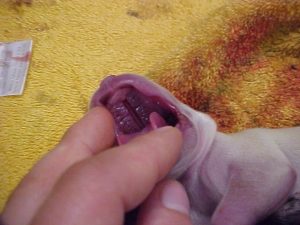
Photo of a puppy with a cleft palate
Dr. Marty Greer, DVM, JD, joins us for an important conversation about pre-breeding protocols. Greer provides insight on what to do (hint: folic acid!) and what not to do to help ensure a healthy litter.
Bitches who are to be bred should be started on a protocol 6-8 weeks ahead of estrus, Greer noted. Considerations include a proper diet, supplements and when to use flea, tick and heartworm treatments.
“We know from livestock and wildlife that when females are just slightly soft they produce more offspring,” Greer said. “They ovulate more if the caloric intake increases just before mating.”
Appropriate diets should include carbs, Greer said, and avoid phytoestrogens from peas/legumes. Owners should also supplement vitamin b9, folic acid, starting 2 months ahead of breeding to help prevent cleft palates. Greer recommends dosing 5mg/dog/day. For more information on some of the research on this topic, go to
http://www.woodhavenlabs.com/documents/FolicAcidCleftPalateRoyalCanin.pdf
Studies indicate that breeders can insure a 50-70 percent reduction of cleft palates by using folic acid properly.
Cleanliness is next to godliness
Make sure your bitch is clean before visiting the vet or having her puppies. A bath and sanitary trim will keep the vet and the puppies happier!
What NOT to do
Vitamins A and D in excess during the first two trimesters can *cause* cleft palates, Greer said. She also noted that while most of us know not to give steroids orally during pregnancy, that even topical application in ears or eyes is contraindicated.
More myth busting and important advice
- Can you or should you save cleft palate puppies — Greer shares some of the hard choices to be made
- Goats milk and cataracts — use an appropriate formula for dogs
- Colostrum/plasma — frozen plasma can make all the difference
- Subcu fluids — how and why
284 – Veterinary Ethics and Building a Relationship with Your Vet
Veterinary Ethics and Building a Relationship with Your Vet
Dr. Marty Greer, DVM, JD, president of the Society for Veterinary Medical Ethics visits with Host Laura Reeves about how breeders and veterinarians can work together for a positive outcome.
“Vets are not held in as high esteem as they have been in the past,” Greer said. “And that’s concerning to me. As veterinarians, we touch so many people in a positive way. It’s truly a calling. It’s not just a job that you get in your car and drive there. It has to be a passion, people don’t get rich doing this.”
Too much Dr. Google
“Communication is a really important piece,” Greer said. “Many vets and staff are introverts by nature. Honest open frank communication is the best way to handle any situation.”
Greer recommends that if owners have a particular opinion on diet, vaccines, etc they need to interview vets to find someone they enjoy working with, even if it means driving further.
“Bring ideas but listen to what vet has to say,” Greer said. “Start a conversation that is a give and take.”
Greer noted that up to 30 percent of dogs going to an emergency clinic don’t have good outcomes. She adds that while a client may not have the relationship with the doctor at an emergency or specialty clinic, but these hospitals can do amazing things with new medical procedures.
“Develop a relationship with your vet, even the staff at a local emergency clinic, before you have a crisis,” Greer recommended.
Fear Free Medicine
Greer also suggested that clients check in to some of the methods to condition dogs to quietly accept treatment and handling for a better outcome in any situation, emergent or standard practice.
Telemedicine is a huge, up and coming service, Greer said. While it inherently has some draw backs, she noted that this is the next frontier of veterinary medicine.
“There are multiple services where vets can do real-time, long-distance consultation,” Greer said. “Seismic changes will be happening in the next couple years, with the AVMA releasing new policies recently.”
Other resources referenced in this podcast:
Debra Hamilton’s mediation services: https://puredogtalk.com/finding-common-ground-to-grow-the-purebred-dog-fancy-pure-dog-talk/
Dr. Karen Overall: https://puredogtalk.com/dr-karen-overall-temperament-vs-geneticspure-dog-talk/



